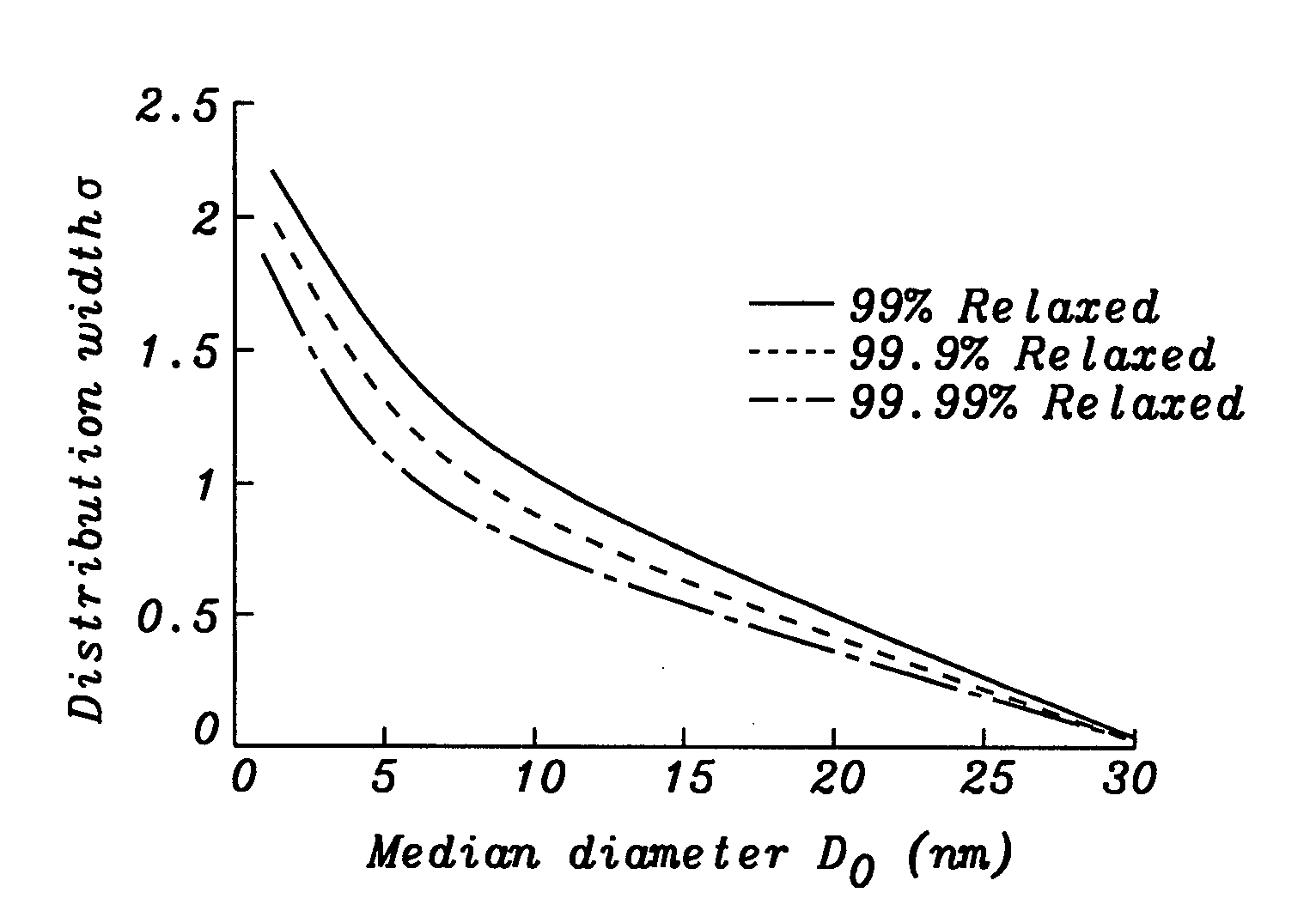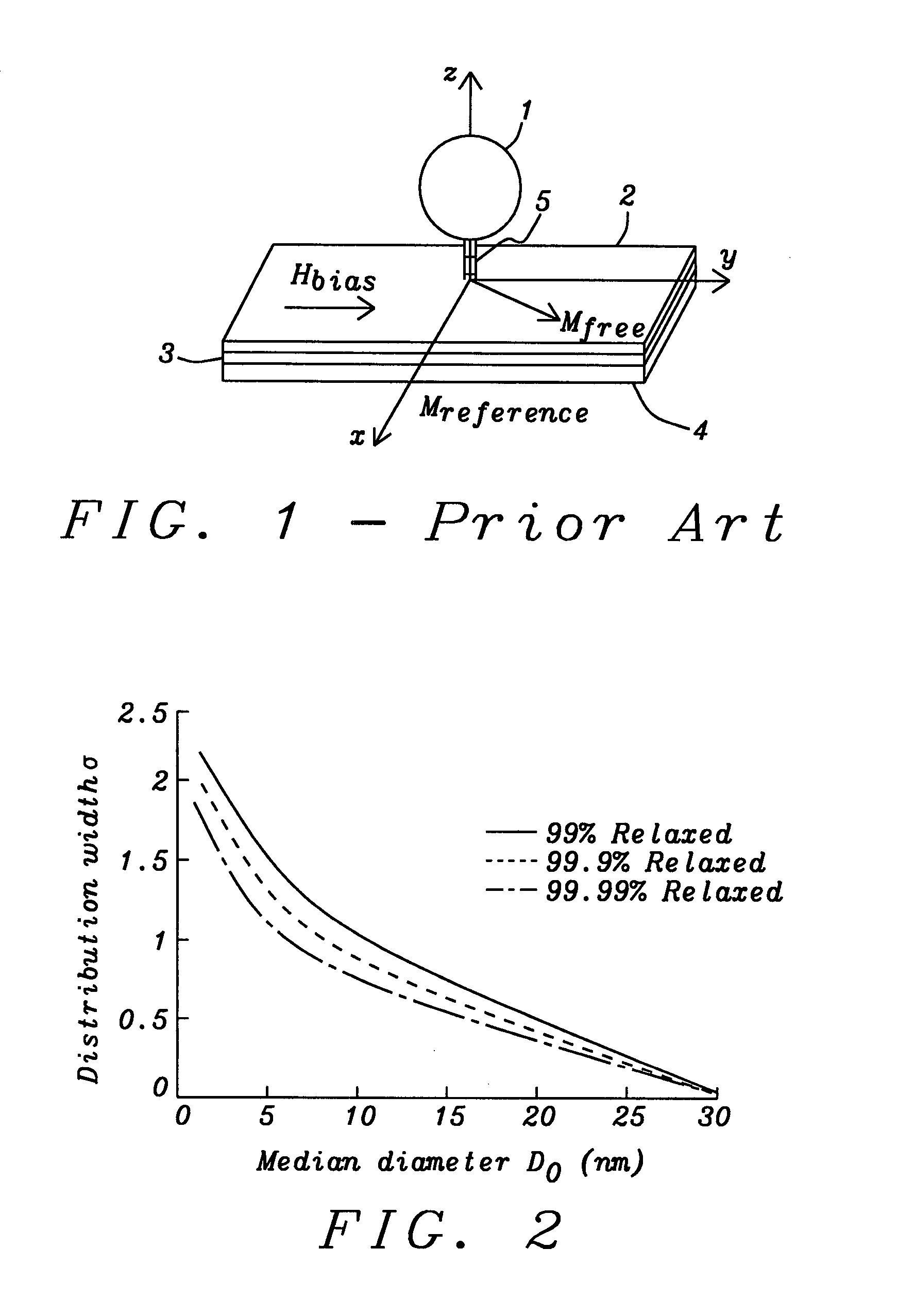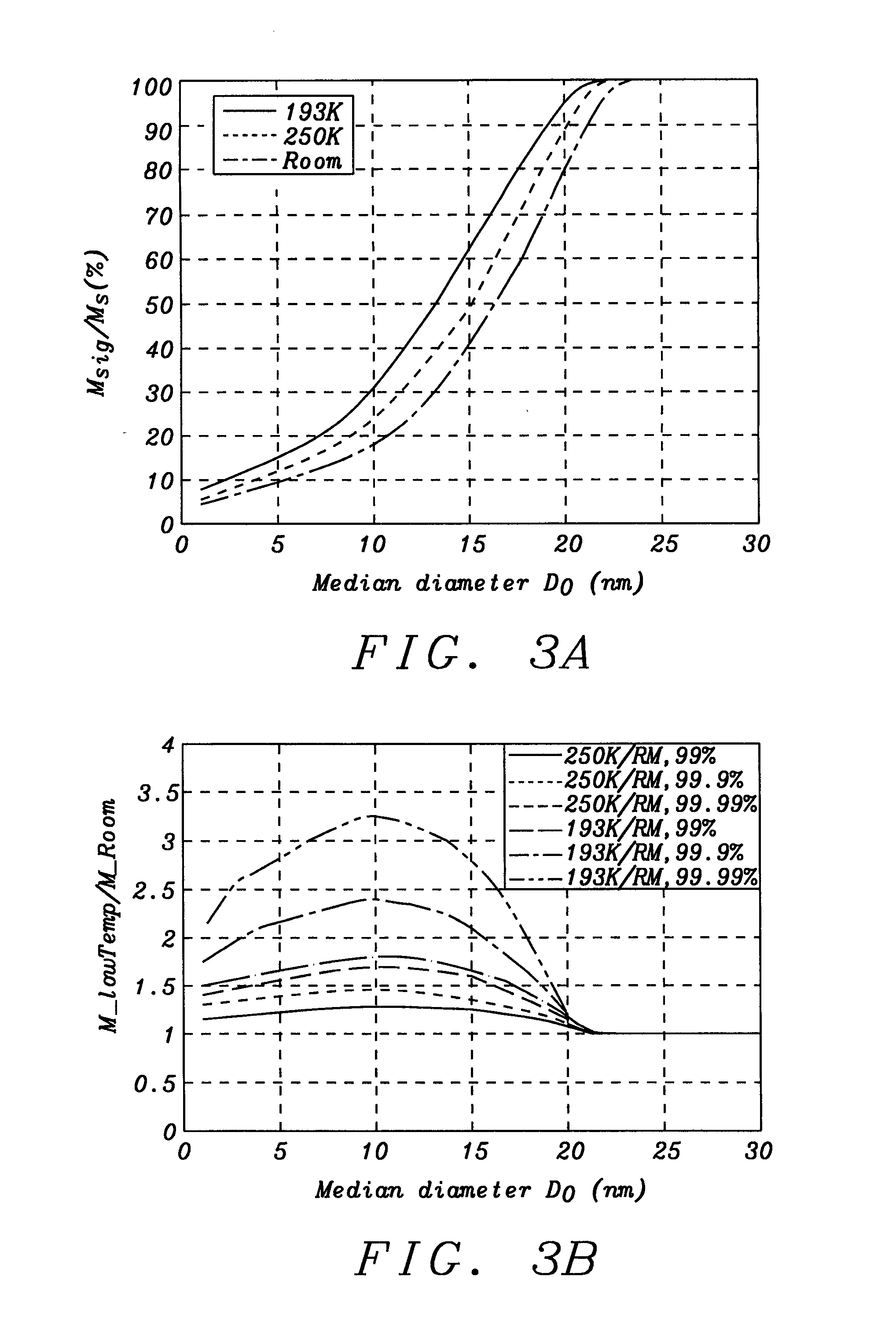Low temperature method to enhance detection of magnetic beads
a low temperature, magnetic beads technology, applied in the field of magnetic beads, can solve the problems of limiting factors such as low signal amplitude, low signal amplitude, and relatively small signal produced by the mr sensor from the magnetic moment of the magnetic labels, and achieve the effects of increasing the detectable magnetic moment, maximizing the signal, and enhancing the detection of said magnetic beads
- Summary
- Abstract
- Description
- Claims
- Application Information
AI Technical Summary
Benefits of technology
Problems solved by technology
Method used
Image
Examples
Embodiment Construction
[0048]The invention relates to a method to enhance the detection by a magneto-resistive (MR) sensor of magnetic beads, magnetic particles and magnetic nano-particles, by reducing the environmental temperature during the detection. The magnetic beads, particles or nano-particles can be used as the magnetic labels in biological, chemical or other applications for detection of biological or chemical elements, such as molecules, viruses, bacteria, cells and chemical compounds. This method is aimed at increasing the magnetic moment of the magnetic beads, particles or nano-particles that is induced by an applied magnetic field, which is the detectable physical quantity for the MR sensors.
Super-Paramagnetic Relaxation
[0049]Super-paramagnetic labels are made either by suspension of magnetic nano-particles in non-magnetic matrix, for example as in Dynabeads (available from the Invitrogen company located at www.invitrogen.com), or directly with nano-particles as the labeling unit [8]. The mag...
PUM
 Login to View More
Login to View More Abstract
Description
Claims
Application Information
 Login to View More
Login to View More - R&D
- Intellectual Property
- Life Sciences
- Materials
- Tech Scout
- Unparalleled Data Quality
- Higher Quality Content
- 60% Fewer Hallucinations
Browse by: Latest US Patents, China's latest patents, Technical Efficacy Thesaurus, Application Domain, Technology Topic, Popular Technical Reports.
© 2025 PatSnap. All rights reserved.Legal|Privacy policy|Modern Slavery Act Transparency Statement|Sitemap|About US| Contact US: help@patsnap.com



